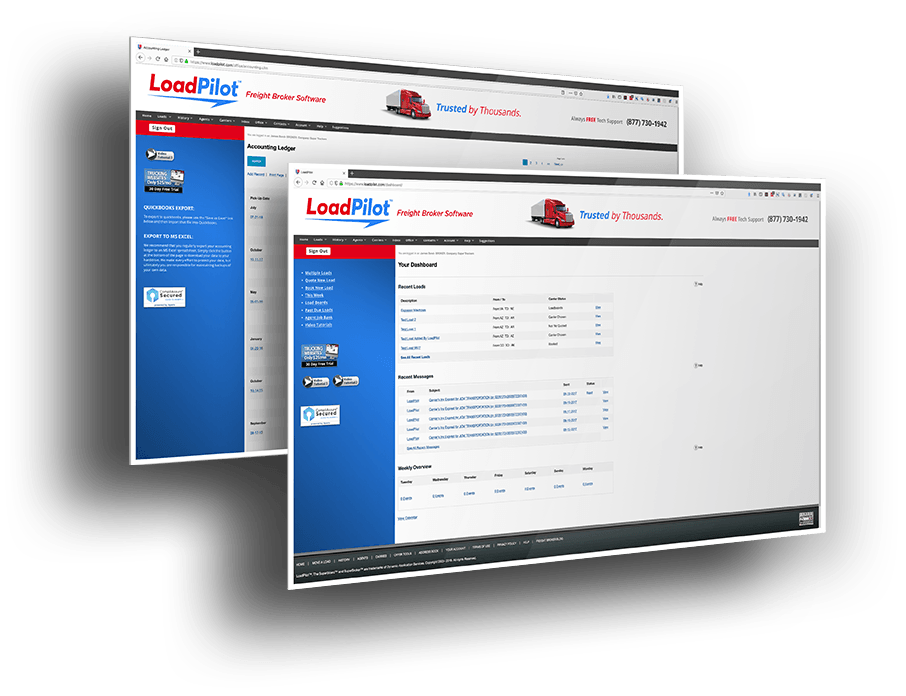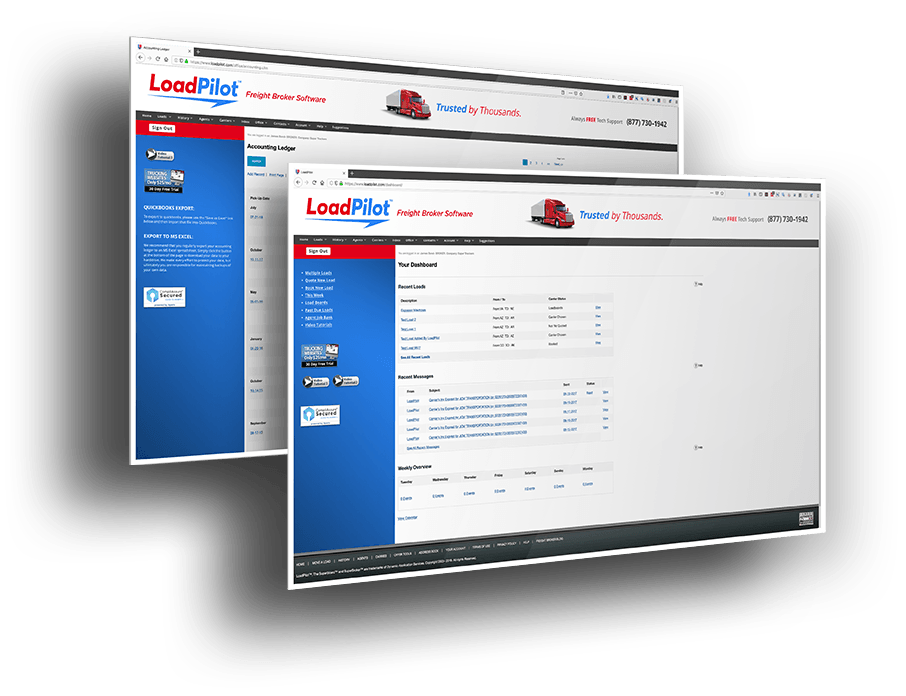The holiday season is upon us, and for freight brokers in the logistics business, it’s not just a time for festive cheer but also a season of unique challenges and opportunities. As we reflect on the past year, it’s crucial to understand the evolving landscape of the logistics industry in the United States and equip ourselves with strategies to overcome hurdles and ensure a seamless holiday season. In this blog post, we’ll delve into the challenges faced by freight brokers in the last year, supported by actual statistics, and provide valuable tips to tackle these challenges head-on in 2024.

Challenges in the Logistics Business – A Year in Review:
1. Supply Chain Disruptions:
The supply chain disruptions witnessed over the past year have been unprecedented, impacting freight brokers across the nation. According to the Bureau of Transportation Statistics, the disruption index reached an all-time high of 125 in 2022, indicating the severity of challenges faced by the industry. Issues such as port congestion, container shortages, and labor disputes have created bottlenecks in the supply chain, affecting the timely movement of goods.
The supply chain disruptions were exacerbated by global events, including the COVID-19 pandemic, geopolitical tensions, and natural disasters. These factors led to a domino effect, causing delays at every stage of the supply chain. Freight brokers found themselves grappling with unpredictable lead times and a heightened need for adaptability.
2. Rising Fuel Costs:
Fluctuating fuel prices have been a constant concern for freight brokers, affecting operational costs and profit margins. The U.S. Energy Information Administration reported a 30% increase in diesel prices over the last 12 months. This rise in fuel costs has compelled brokers to reassess pricing strategies and find innovative ways to optimize fuel efficiency.
The impact of rising fuel costs is not limited to the direct expenses incurred. It ripples through the entire logistics network, affecting transportation costs, carrier pricing, and ultimately, the end consumer. Freight brokers are challenged to strike a delicate balance between maintaining profitability and offering competitive pricing in a volatile market.
3. Driver Shortages:
The shortage of truck drivers continues to plague the logistics industry, impacting the timely delivery of goods. According to the American Trucking Associations, the industry faced a shortage of approximately 60,000 drivers in 2022. This scarcity has led to increased competition for available drivers and, consequently, higher transportation costs.
Driver shortages have been aggravated by factors such as an aging workforce, stringent regulatory requirements, and lifestyle preferences of the younger generation. Freight brokers face the challenge of not only finding available drivers but also ensuring their retention in a highly competitive market.
4. Capacity Constraints:
Beyond driver shortages, the industry has grappled with overall capacity constraints. The increasing demand for freight services has outpaced the available capacity, leading to a delicate balancing act for freight brokers trying to fulfill customer expectations while dealing with limited resources.
5. Technology Integration Challenges:
While technology can be a solution, it also presents challenges. Integrating new technologies seamlessly into existing operations, ensuring data security, and training staff for efficient utilization of these tools pose additional hurdles for freight brokers.

Tips for Addressing Holiday Challenges in 2023:
1. Build Stronger Supplier Relationships:
In the face of supply chain disruptions, establishing and nurturing strong relationships with suppliers is paramount. Collaborate closely with suppliers to gain real-time insights into inventory levels, production schedules, and potential disruptions. Having open communication channels enables you to proactively address challenges and find alternative solutions, ensuring a steady supply of goods during the holidays.
Consider diversifying your supplier base to reduce dependency on a single source. Engage in regular communication and collaboration sessions to understand their challenges and work together on contingency plans. Building resilience in your supply chain network is essential for navigating uncertainties.
2. Implement Dynamic Pricing Strategies:
To counter rising fuel costs and volatile market conditions, freight brokers can implement dynamic pricing strategies. Leverage data analytics and market intelligence to adjust pricing dynamically based on fuel costs, demand fluctuations, and other external factors. This flexibility not only helps in maintaining profitability but also ensures competitiveness in the market.
Consider offering incentives for off-peak deliveries or partnering with carriers for long-term contracts to secure stable pricing. Dynamic pricing should not only react to immediate market changes but also factor in long-term trends, helping you create a sustainable pricing model.
3. Invest in Technology and Automation:
Streamlining operations through technology and automation can significantly mitigate challenges posed by driver shortages and supply chain disruptions. Invest in advanced logistics management systems, route optimization software, and automated tracking solutions to enhance efficiency and reduce dependency on manual processes. Embracing technology ensures better visibility into the supply chain, enabling quicker decision-making.
When implementing new technologies, invest in training programs for your staff to ensure a smooth transition. Regularly update your technology stack to stay ahead of the curve. Explore emerging technologies such as blockchain for enhanced transparency and traceability throughout the supply chain.
4. Prioritize Driver Retention and Recruitment:
To address the ongoing driver shortage, focus on driver retention and recruitment strategies. Offer competitive wages, attractive benefits, and a positive work environment to retain existing drivers. Simultaneously, collaborate with trucking schools and recruitment agencies to attract new talent to the industry. A robust driver recruitment and retention program can alleviate capacity constraints during the peak holiday season.
Consider implementing mentorship programs pairing experienced drivers with newcomers. Provide ongoing training opportunities to enhance skills and job satisfaction. Actively seek feedback from drivers to address concerns promptly, fostering a positive work culture.
5. Plan Ahead and Communicate Proactively:
Proactive planning is key to successfully navigating the holiday rush. Collaborate closely with shippers, carriers, and other stakeholders to anticipate demand spikes, potential disruptions, and capacity constraints. Develop contingency plans and communicate transparently with all parties involved. By staying ahead of challenges, you can position your brokerage as a reliable and responsive partner during the busiest time of the year.
Create a centralized communication hub for real-time updates and alerts. Conduct scenario planning exercises to prepare for various contingencies. Establish clear communication protocols with clients, carriers, and suppliers to ensure everyone is informed and aligned.
As freight brokers gear up for the holiday season, the lessons learned from the challenges of the past year serve as valuable insights for navigating the road ahead. By addressing supply chain disruptions, fuel price fluctuations, and driver shortages with proactive strategies, brokers can not only overcome obstacles but also contribute to a smoother and more successful holiday season. Embrace technology, build strong partnerships, and prioritize effective communication to ensure that your freight brokerage thrives during the hustle and bustle of the festive period. Wishing all freight brokers a prosperous and joyous holiday season!



